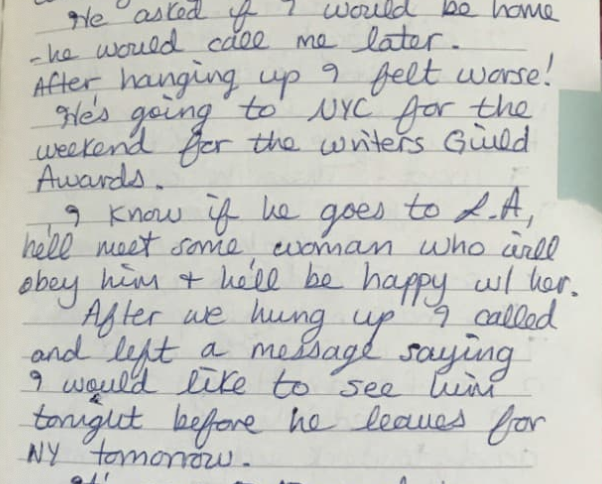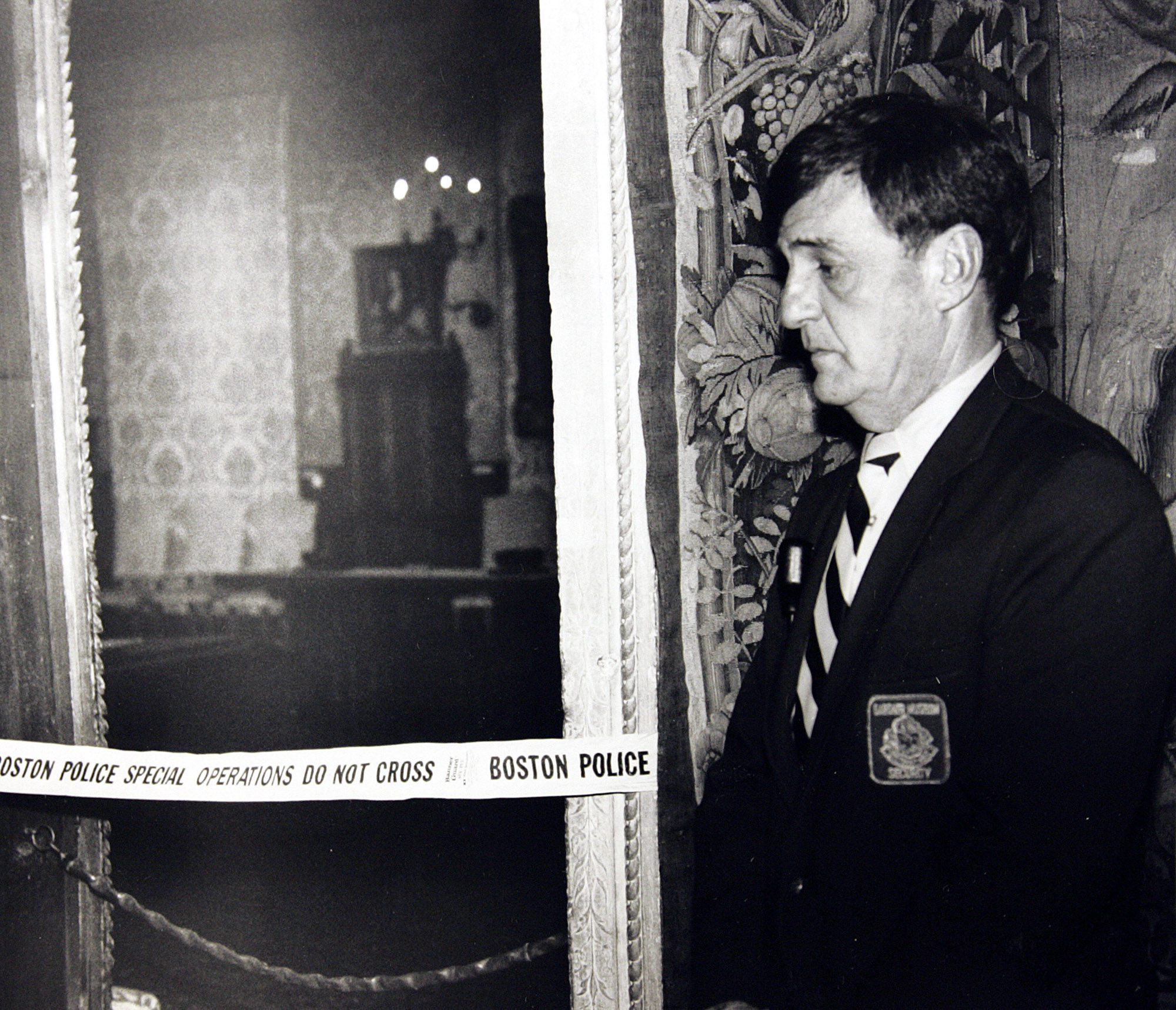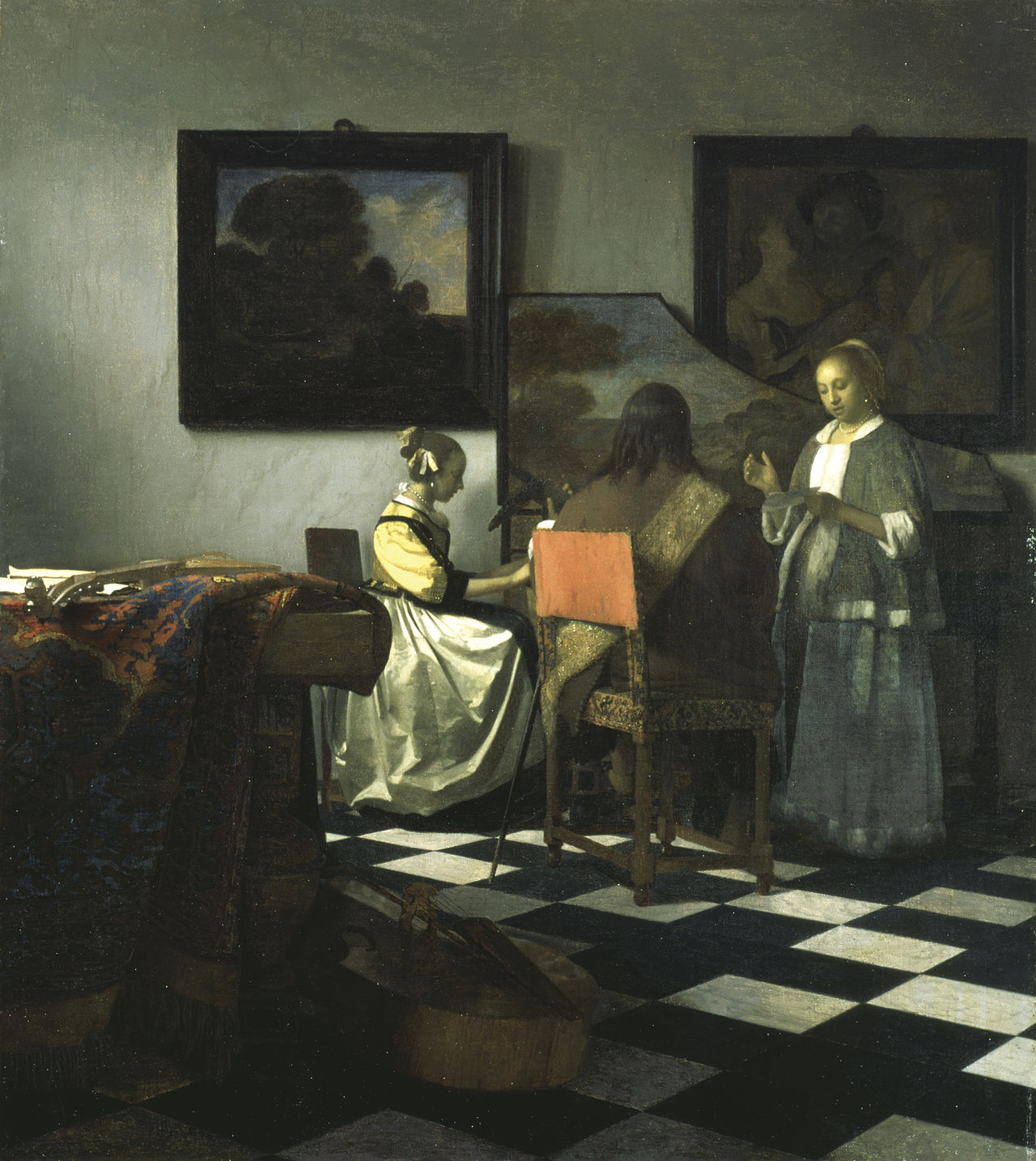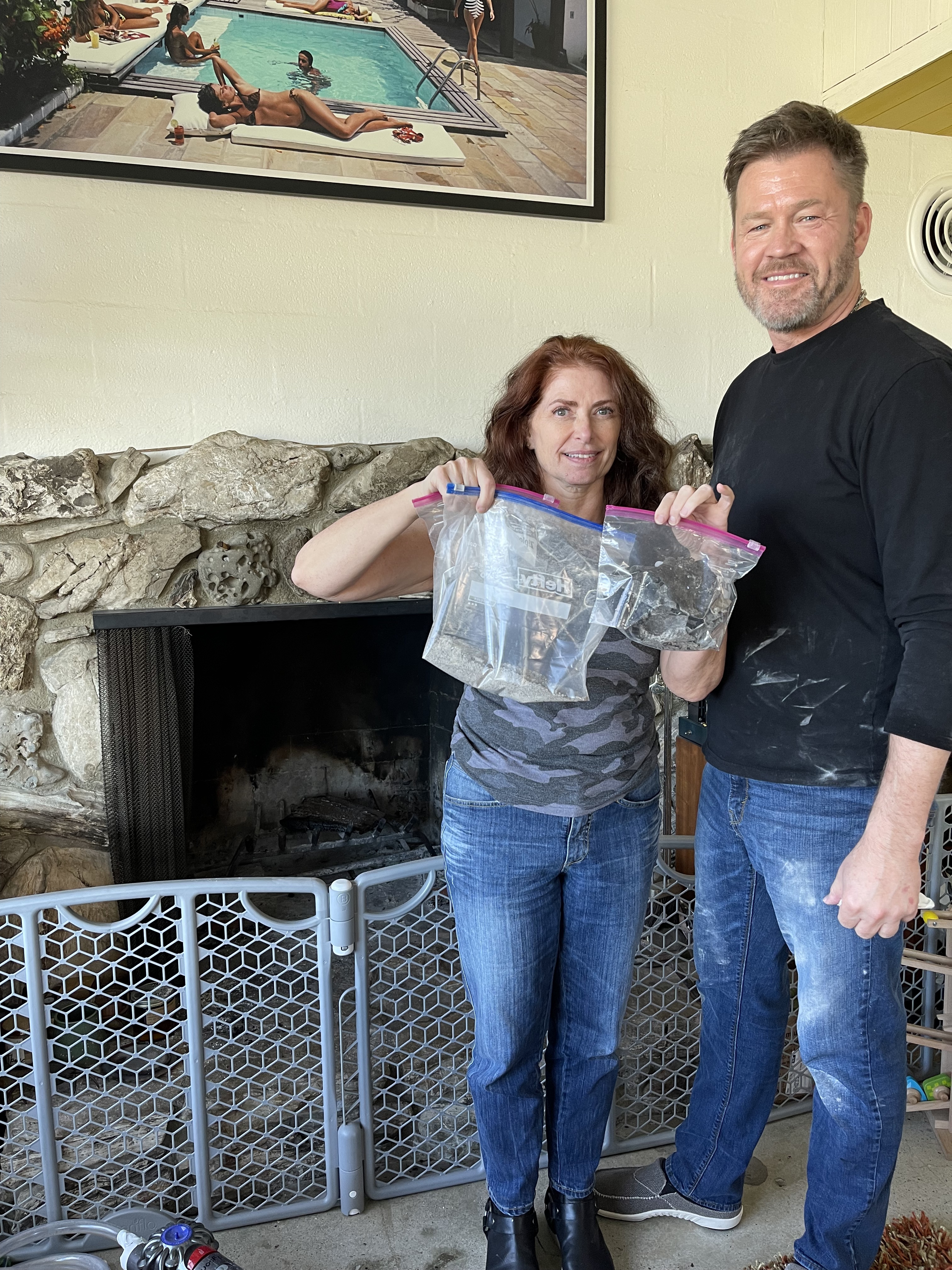Brian McDevitt, a convicted art thief and serial conman, was among the first to have his fingerprints sent to the FBI when Boston’s Gardner Museum was brazenly robbed in the early hours of March 18, 1990.
Mcdevitt fled Massachusetts for LA in the wake of the heist as investigators turned up the heat.
Before packing up and moving out west, he allegedly confessed to masterminding the scheme to his girlfriend, Stéphanie Rabinowitz, and asked her to provide a false alibi to the FBI.
Upon arriving in Tinsel Town, McDevitt falsely touted himself as a screenwriter with a distinguished career with credits on the hit show The Wonder Years and other esteemed TV shows and films.
He met Ben Pollack, a 19-year-old director and scriptwriter in mid-July 1991, and used his fake credentials to woo the up-and-comer.
McDevitt, who joined the Writers Guild of America, and Pollack quickly struck up a partnership and began developing scripts to sell to a number of big production companies, including the likes of Paramount, Columbia, and Disney.
Pollack already had two scripts ready to pitch. He asked to see some of McDevitt’s ideas but was shocked at the lack of quality in his work, particularly for someone who self-aggrandized as an East Coast hotshot, Pollack told The U.S. Sun.
Then, one day, McDevitt pitched him a script idea about two bumbling thieves who rip off an art museum and are shocked at their success.
[McDevitt] was the smartest idiot I’ve ever encountered, and if you look at the art that was taken from the museum, and how random it all was, that’s not the work of a criminal mastermind but an opportunistic moron
Ben Pollack
In the story, the two thieves had planned to sell the stolen art to a foreign buyer, hiding it in a cave until a deal could be struck.
But after the deal fell through, the thieves realized they couldn’t sell the art, and being caught with it would run the risk of a lengthy prison term, so they decided to destroy it.
Much like the real-life Gardner Heist, the art in question consisted of several priceless paintings and two metal statues.
Eric Ulis, an independent investigator who has previously interviewed Pollack, said that the script outline had two statues being buried and the rest of the art burned to ash.
McDevitt’s ex-girlfriend Rabinowitz, along with Pollack, and Ulis, all believe McDevitt’s script idea was a thinly disguised confession.
“There’s no doubt in my mind he did this,” said Pollack of McDevitt and the Gardner Museum Heist.
“He was the smartest idiot I’ve ever encountered, and if you look at the art that was taken from the museum, and how random it all was, that’s not the work of a criminal mastermind but an opportunistic moron.
“That script idea told us exactly what happened; he pulled off the heist, somehow, and destroyed and buried the art when he couldn’t sell it.”
ART ‘BURNED & BURIED’
Ulis concurs with Pollack’s beliefs, and he and Rabinowitz recently traveled to McDevitt’s old home in the Hollywood Hills in search of clues.
The investigator believes McDevitt may have burned some of the art in a large fireplace in the home’s living room.
Ulis and Rabinowitz collected samples from an ash pit beneath the fireplace that’s not believed to have been cleaned since McDevitt moved out 32 years ago.
Early tests of the sample have proved inconclusive but Ulis plans to conduct more forensic tests soon.
He believes had the artwork not been destroyed it would’ve almost certainly been recovered by now.
“It was radioactive stuff,” said Ulis. “The art was worth an estimated $200 million at the time and some of the pieces were world famous.
“I believe he was in over his head and burned the art just as he depicted in the script, only it wasn’t in a cave but in his fireplace in the Hollywood Hills.
“As for the two statues, they’re still around somewhere but whether he buried them someplace or chucked them in the Pacific Ocean, it’s hard to tell.”
There remains a $10 million no-questions-asked reward out for the collection’s safe return and the statute of limitations for theft in the heist has long since passed.
“If you’re the bad guy, you could return this stuff – or some of this stuff – for up to $10 million without getting in trouble, and the fact that nothing has ever come back indicates, to me, that it just isn’t around anymore,” continued Ulis.
“There’s no other explanation for it, so I guess that’s the sad reality of this case.
“Brian died in 2004, and the guy I believe was his accomplice has also since been murdered, so whatever happened they took it to the grave with them.
“But that’s not entirely accurate because Brian literally confessed to Stephanie.”
BRAZEN $500M HEIST
The Gardner Museum Heist unfolded in the early hours of March 18, 1990, following a rowdy night of St. Patrick’s Day celebrations in the heart of Boston.
Two crooks disguised as cops talked their way into the museum at 1:20 am after knocking on a side door and informing a security guard that there had been a report of a disturbance inside.
In violation of the museum’s strict policies, the guard, Rick Abath, let the two men inside without obtaining permission from a supervisor.
The thieves approached his desk and asked him to summon anyone else present inside the museum at once.
Abath called another security guard to the desk, Randy Hestand, who was also working the overnight shift.
The guards were both handcuffed, blindfolded with duct tape, and escorted to separate areas in the museum’s basement.
The thieves moved quickly through the museum and were first captured on motion sensors in the Dutch Room at 1:48 am.
One of the men smashed an alarm system and then they began ripping paintings from the wall.
Two of Rembrandt’s renowned paintings were taken first: The Storm on the Sea of Galilee – his only seascape – and A Lady and Gentlemen in Black.
The priceless works were thrown down on the marble floor and cut out of their frames with a blade.
The thieves also removed a large Rembrandt self-portrait from the wall, however, that painting would mysteriously be left behind, still in its frame and leaning against a cabinet.
Instead, two of Rembrandt’s postage stamp-sized etchings were taken, along with Landscape With an Obelisk by Govert Flinck, and The Concert by Johannes Vermeer.
The Concert – one of only 36 known works of Vermeer – is valued at over $250 million and remains the most valuable object ever stolen.
In total, the heist lasted 81 minutes.
Before leaving, the men checked in on the two guards and broke into the security director’s office to steal all the surveillance footage.
By 2:45am, the men had exited the museum through the same side door they entered and were seen fleeing the area in a hatchback.
COPYCAT CRIME
A total of 13 pieces were stolen from the museum.
Among the other items lifted were five works of the French impressionist Edgar Degas, Chez Tortoni by Edouard Manet, a relatively valueless eagle flag topper, and an equally valueless Chinese Gu.
The estimated value of the missing artwork was first believed to be in the region of $200million.
However, in the late 2000s, various art dealers suggested the haul was likely worth somewhere in the region of $500 to $600million, possibly even more today.
The almost idiosyncratic mixture of artwork taken has long puzzled detectives.
While some of the art is incredibly valuable, the thieves also passed up on other far more valuable works, including those by the likes of Raphael, Botticelli, and Michelangelo.
The thieves also never entered the museum’s third floor where Titan’s The Rape of Europa hung.
The painting is considered one of the most influential of the Renaissance era and one of the country’s most precious works.
The odd choices made by the thieves and the ruthless way in which they cut the pieces from their frames led police to believe the men were amateur opportunists, rather than experts who had been commissioned to steal specific pieces.
The Gardner Museum heist remains the largest art theft in history.
A huge, multi-agency investigation spawned in the wake of the robbery, and an extensive list of suspects – from petty thieves to career burglars and infamous mobsters – was compiled by detectives.
McDevitt found his name high on the list.
A decade earlier, he had attempted a very similar heist to the Gardner case in New York.
The museum at the center of McDevitt’s foiled scheme was The Hyde Collection in Glens Falls, which modeled itself on the Gardner Museum.
Established by paper fortune heiress Charlotte Pruyn Hyde in 1952, the museum houses its creators’ collection of Old Masters.
The works included Sandro Botticelli, Rembrandt, Edgar Degas, Pablo Picasso, and Pierre-Auguste Renoir pieces.
McDevitt and his accomplice, Michael B. Morey, put together a plan to rob the museum on Christmas Eve 1980.
The pair hijacked a Federal Express van, knocked out the driver with ether, and donned FedEx uniforms.
With them, they brought handcuffs and duct tape to bind the guards and tools to cut the paintings from their frames.
McDevitt and Morey planned to empty the museum and fence the art in southern Florida, before leaving the country to retire young and rich.
One thing the two men failed to account for, however, was holiday rush-hour traffic.
I know who did it, and I told the FBI and they didn’t care.
Ben Pollack
McDevitt and Morey got stuck in bumper-to-bumper traffic and arrived at the museum after it closed.
The driver of the FedEx truck eventually came around and later identified McDevitt as one of the would-be art thieves.
He was convicted of attempted robbery and sentenced to time behind bars.
SUSPICIOUS ACTIVITY
Glaring similarities between McDevitt’s foiled scheme and the Gardner heist landed him high on the list of promising suspects after the 1990 caper.
Dating him at the time was Stéphanie Rabinowitz, who was then in her early 20s and trying to forge a career in the world of animation.
Rabinowitz kept a detailed diary at the time of her relationship with McDevitt, excerpts from which she shared with The U.S. Sun earlier this year.
In the days before the Gardner Heist, Rabinowitz wrote that she and McDevitt were experiencing difficulties in their relationship, describing him as hostile, mean, and somewhat aggressive.
On March 15, 1990, McDevitt informed Rabinowitz that he had to go to New York to attend the Writers Guild of America Awards.
She wouldn’t hear from him again until late on March 18 – hours after the Gardner heist, and by then she said he was calmer and appeared to be back to his usual, charming self.
Within a few months, McDevitt announced he was going to Los Angeles and wanted Rabinowitz to accompany him.
She declined the invitation but the pair stayed in touch.
RICK ABATH AND THE MYSTERY TAPE
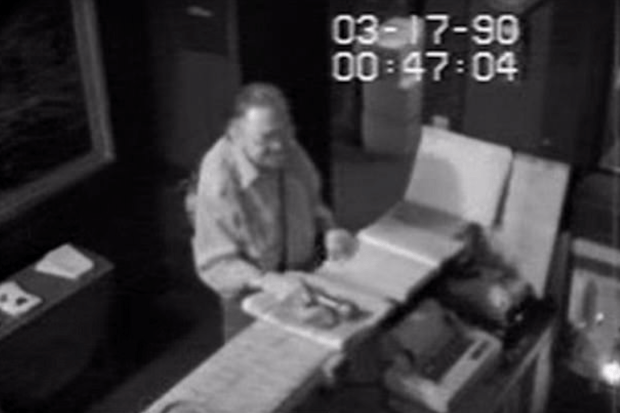
In 2015, authorities released a grainy surveillance video inside the museum from the night before the heist and launched a fresh appeal to the public to help locate the stolen art.
The low-resolution clip shows security guard Rick Abath – a 23-year-old Berkley dropout – appearing to press an intercom button.
Abath then grants an unidentified male access to the museum’s reception area at around 12:49am, almost exactly 24 hours before the heist.
The male visitor is also seen getting out of a car matching the general description of the hatchback the two thieves escaped in.
Abath was, for years, treated with much suspicion in the case because he broke protocol by letting the thieves in.
The museum had a strict policy stating guards could not open the doors for anyone, including cops and firemen, without first getting permission from a supervisor.
Abath admitted to opening the doors on the night of the robbery, saying he was under the impression that it was his duty to check the security of the doors – something that higher-ups at the museum contested.
However, Abath never told police he’d opened the doors the night before the heist.
Investigators also discovered he’d opened and closed a side door shortly before the caper began, which some believe could’ve been Abath signaling the thieves.
There are further suspicions that he stole Mante’s Chez Tortoni from the Gardner Museum’s Blue Room on the first floor.
Unlike in the two rooms the other 12 artworks had been stolen from, there were no movements recorded by motion sensors in the Blue Room other than Abath’s movements during his rounds that night.
And, unlike any of the other frames, the frame of Chez Tortoni was left on the security director’s chair.
Abath had been known to complain about the museum’s security shortcomings and had just given his two-week notice.
He denied any involvement in the heist and passed away in March this year, aged 57.
Meanwhile, McDevitt hastily packed up his apartment, rented a U-Haul, and drove himself from Boston to Los Angeles, setting off in the middle of the night.
There, he eventually met Ben Pollack.
But within six months of working together, Pollack sensed something amiss with the larger-than-life character and hired a private detective to dig into his past.
Pollack soon discovered that almost nothing McDevitt had told him was true, only his name.
After Pollack confronted him, McDevitt commenced a campaign of harassment that lasted weeks, calling him several times a day — sometimes a hundred times or more – only to hang up whenever he answered.
By the summer of 1992, McDevitt was facing criminal charges for his harassment of Pollack and was on the verge of being dismissed from the Writers Guild.
Then he was named in a report in The New York Times as one of the prime suspects in the Gardner case.
In the article from June 2, 2002, it was revealed McDevitt had been questioned by the FBI and asked to submit fingerprints several months earlier.
He denied any involvement in the crime to the Times and doubled down on his innocence on national TV when quizzed by a CBS reporter the following year.
“This was clearly an operation that somebody paid for,” McDevitt told 60 Minutes in 1993.
“The only way that you can get those paintings for your collection is that you pay somebody to go in and steal them. I mean, that’s what, that’s what I used to do.”
But McDevitt had a problem; he didn’t have a concrete alibi for the day of the heist to substantiate his claims of innocence.
A STUNNING CONFESSION
The last time Rabinowitz saw McDevitt was at a wrap party for a show she was working on in Los Angeles on July 25, 1992.
It was during their final meeting that McDevitt offered her a startling confession: he had been paid $300,000 to rob the Gardner Museum in 1990 and needed to leave the country immediately because the feds were closing in on him.
“He told me this man had paid him […] and he said the man paid him $300,000 to rob the museum and he’d managed to do it,” claimed Rabinowitz.
“He told me, ‘I’ve got the money, and I’m going to move to South America. And I would love you to come with me. I’ll take care of you for the rest of your life.'”
Rabinowitz was tempted by the offer but declined.
She told The U.S. Sun her gut instinct was that McDevitt was telling the truth
“Why would somebody innocent make up all this crazy stuff and tell me the FBI is coming to see me?” she asked.
Surely enough, Rabinowitz would twice be interviewed by the FBI, once in 1992 and again in 2004.
The FBI questioned McDevitt twice and he also testified before a grand jury in August 1993.
The following year, his attorney, Thomas E. Beatrice, reiterated his client’s claims of innocence but revealed he’d declined to take a polygraph test, citing a “slight chance of error.”
Beatrice added he was unsure whether McDevitt remained under scrutiny, but conceded that “since the book is not closed on the theft, the book is not closed on Brian.”
He said that the last he knew, McDevitt was in California working on two screenplays, one about a jewel theft, the other on an art theft from a private collection.
After testifying before the grand jury, McDevitt fled south of the border, first settling down in Brazil.
He reportedly died in 2004 from kidney failure, but many who knew him – including Rabinowitz – believe he may have faked his death.
Regardless of his fate, Rabinowitz is convinced he masterminded the Gardner Museum heist.
She and Eric Ulis both believe McDevitt carried out the infamous robbery with the help of a close associate, Steve Donahue, who has also long since died.
Ulis believes the two men carried out the heist in association with a Jamaica-based crime syndicate that masterminded a similar heist in October 1987 at the Bettona Museum, near Perugia, Italy, where 28 paintings were stolen.
The works were recovered on April 26, 1990, when cops raided a villa in St. Catherine.
The Italian police claimed at the time to know who carried out the theft but couldn’t pursue charges against the suspects because they had since fled the country, perhaps to South America.
The Italian works were seized mere weeks after the Gardner heist, and Ulis believes the unnamed suspects, in that case, may have been McDevitt’s prospective buyers for the Gardner art.
He explained, “In December 1989, Brian took Stéphanie to Jamaica, and it’s in Jamaica where she was first introduced to some of his friends, including Steve Donahue.
“I believe it’s during this trip that the idea popped into Brian’s head to attempt to steal some art again. Stéphanie said the trip was primarily for pleasure but she remembers some business talk too.
“There was an international drug ring based out of Jamaica at that time who had dealings with South America […] and it’s my understanding the ring would use high-dollar art as collateral in deals.
“So I believe Brian had this idea in his mind that he was going to steal this art from the museum and sell it to this drug ring to use as collateral and make some money.
“[But] Brian had a big problem. Not only was the art he had taken too hot to handle, but he also couldn’t sell it immediately because his customer no longer existed.
“And what I believe happened is that Brian panicked.”
HIDING IN PLAIN SIGHT
The investigation into the Gardner Heist remains active and ongoing.
Anthony Amore, the museum’s security director, has been working with the bureau to crack the case for 18 years.
Over the last two decades, Amore says the museum and the FBI have received numerous tips from the public with potential sightings of the two most famous stolen paintings, The Concert and The Storm on the Sea of Galilee.
However, investigators believe drawing the public’s attention to the lesser-known works will be the key to cracking the case.
“We’re asking the public to refamiliarize themselves with all 13 stolen artworks, not just the most iconic ones,” said Kristen Setera, a spokesperson for the FBI’s Boston office in a March statement.
“The FBI remains committed to following all viable leads in an effort to return these pieces to the museum.”
Eleven years ago, the FBI claimed to know who was behind the caper but declined to name names.
The only information shared was that the two men were local to Boston and had both since died.
Authorities said they believed some of the artwork changed hands through organized crime circles while moving from Boston to Connecticut to Philadelphia, where the trail went cold around 2003.
In his statement to the Boston Globe on the heist’s anniversary this year, Amore took the opportunity to remind the public of the huge reward on offer.
He urged anyone with information about the heist to come forward.
“We have a $10 million check we’re dying to write,” Amore said.
But for Pollack, he believes the case could’ve been solved years ago.
“I know who did it,” he said.
“And I told the FBI and they didn’t care.”





